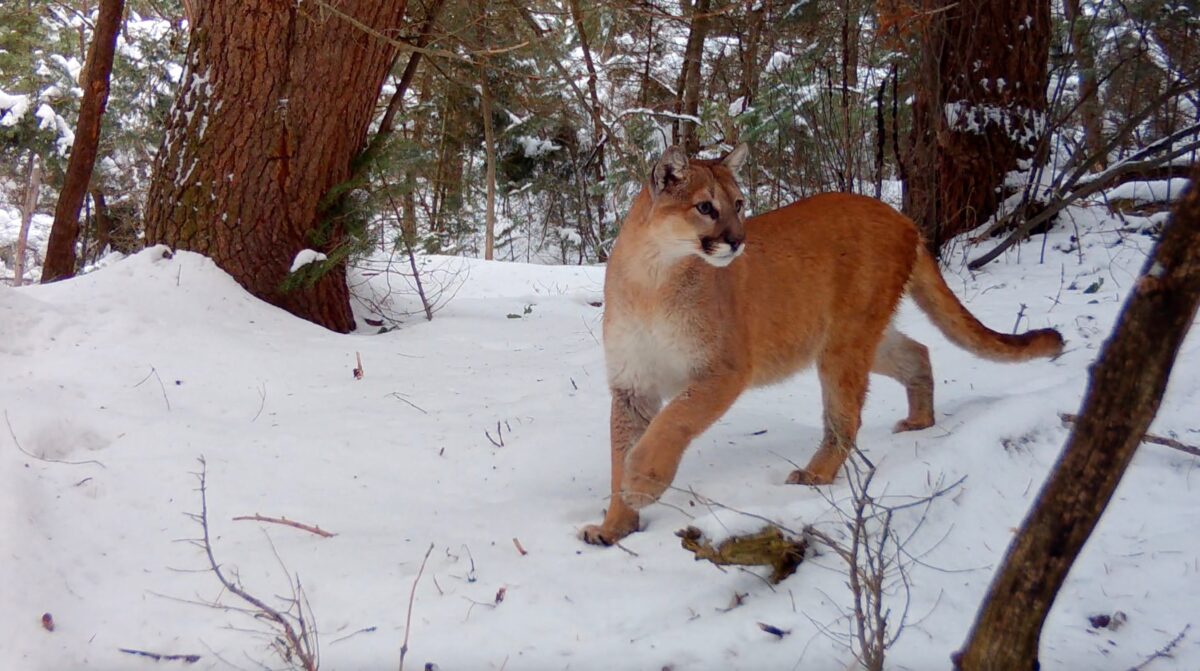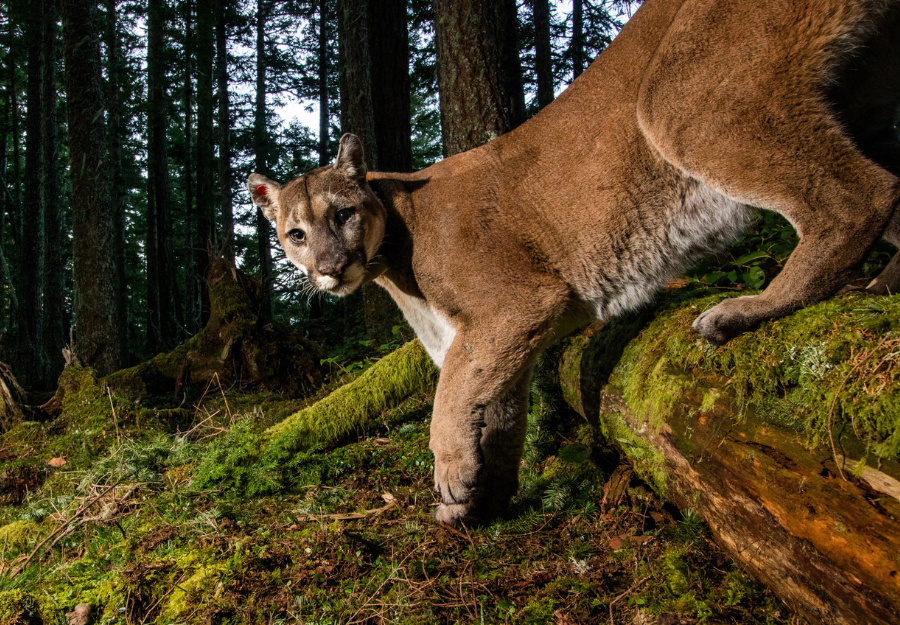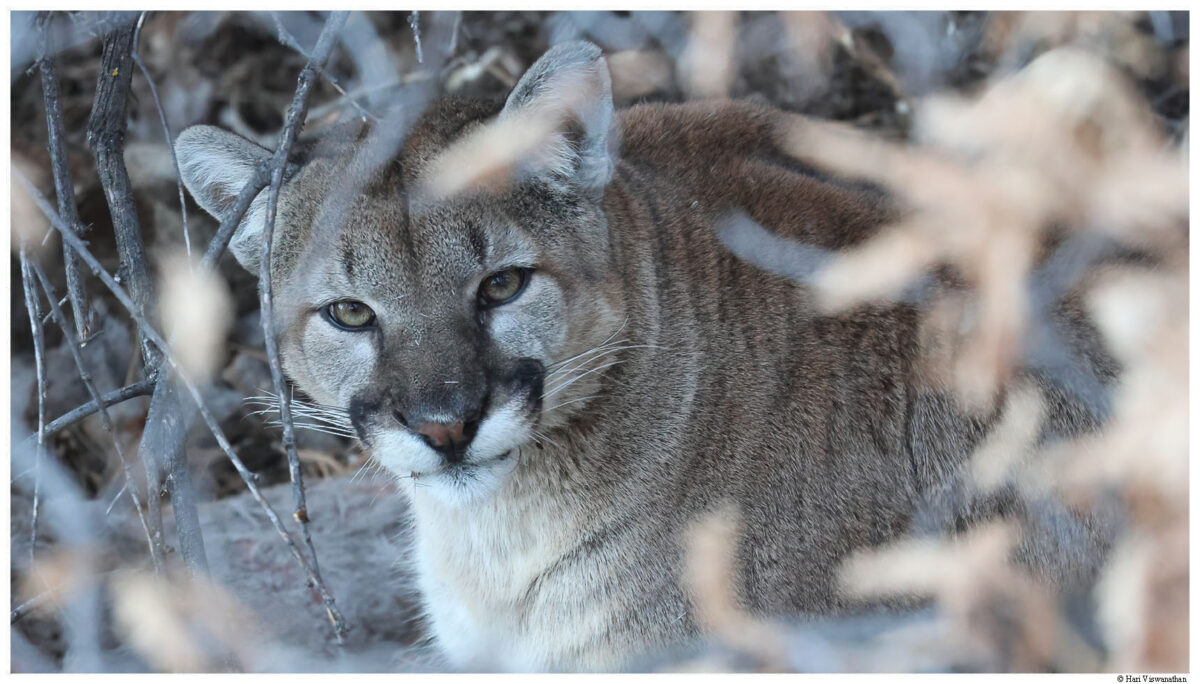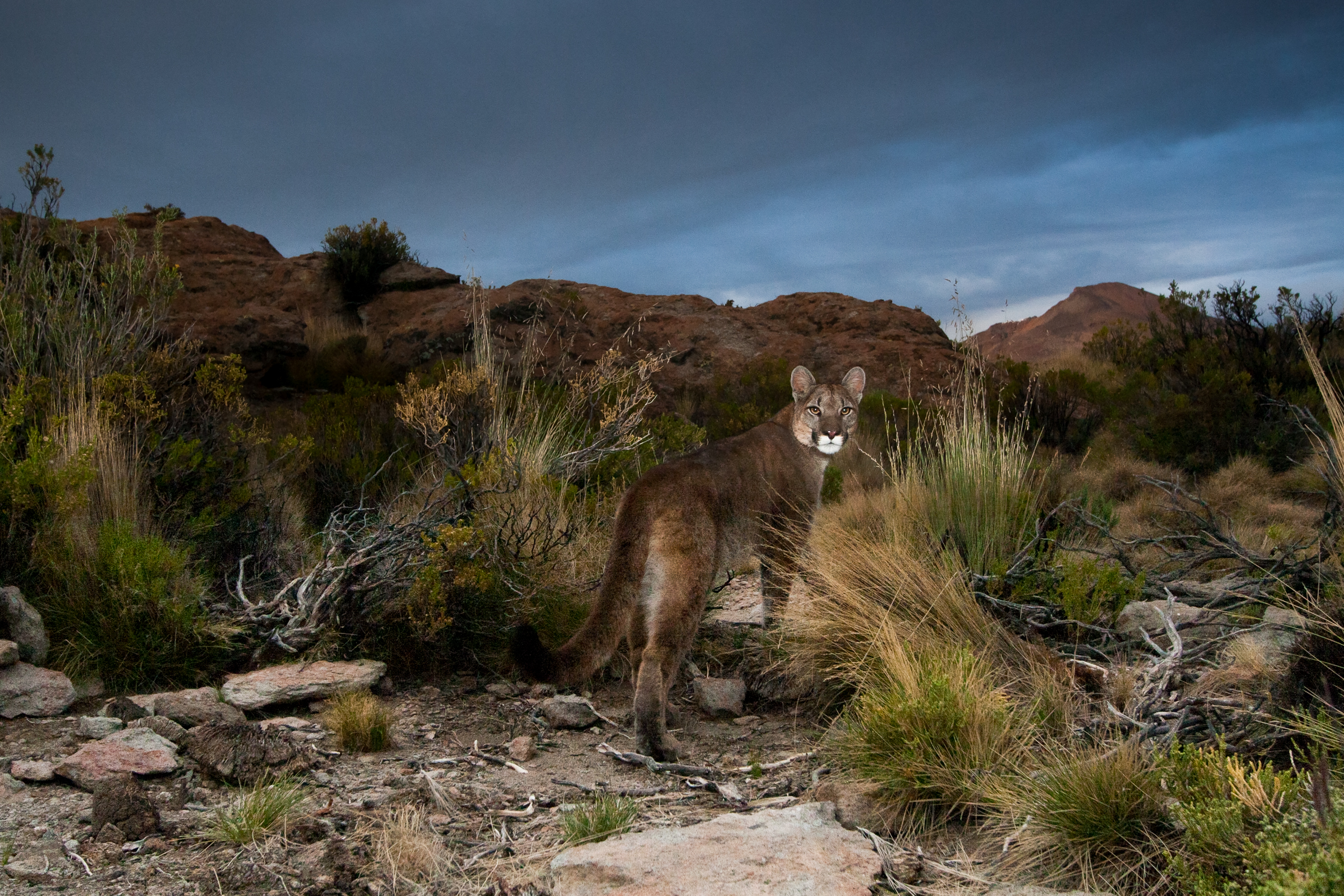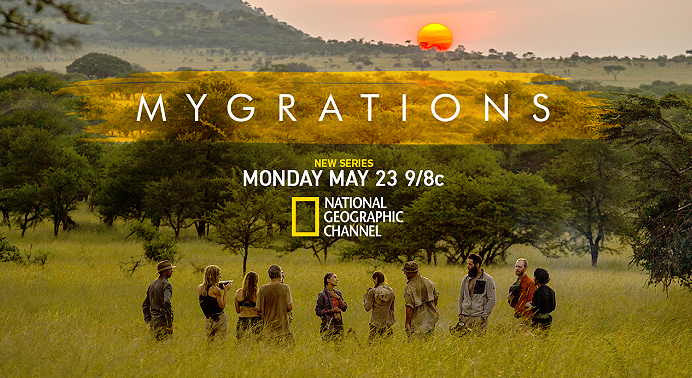
MYGRATIONS: Can Mankind Survive Nature’s Deadliest Migration?
A new series on the National Geographic Channel.
For the first time, a human herd of 20 elite Americans joins the great wildebeest migration across the Serengeti in Tanzania. This wild bunch of survivalists, fitness fanatics, scientists, hunters and farmers, will attempt this feat without tapping out due to exhaustion, hunger or injury. They must use their expert survival skills to navigate North without a map or compass, carry only limited food rations, and survive encounters with the world’s deadliest predators as they cross 200 miles of brutal terrain. Do they have what it takes to reach the Mara River with the wildebeest, or will Nature tear them apart?
Watch more clips at Channel.NationalGeographic.com/mygrations
Series Description
Each spring, in a desperate bid for survival, 1.3 million wildebeests race hundreds of miles north from the dry southern Serengeti plains to the lush grasses of the Maasai Mara in Kenya. It’s an incredibly dangerous journey through a landscape dominated by apex predators, including lions, leopards, hyenas and crocodiles. Tens of thousands of wildebeests won’t make it — so how will humans fare?
“Living in Africa with the animals I’ve studied my whole life, on their turf, was a dream I never thought possible.Amy Rodrigues, Mountain Lion Foundation
Premiering Monday, May 23, at 9/8c, National Geographic Channel’s new series Mygrations follows a team of 20 men and women in a feat that has never been attempted, as they set out on foot, unarmed and without a map or compass, to follow in the footsteps of the wildebeests. The human herd must cross hundreds of miles of scorched savannah — where water, food and shelter are hard to find but lethal predators roam unchecked — to reach the Mara River, the pinnacle of the wildebeests’ death-defying quest for life.
Join the team on their exhausting and perilous six-week journey from the birthplace of mankind in the southern Serengeti, north to the Mara River, on a path carved by billions of hooves over countless centuries.

Before embarking on their journey, the human herd load their packs with rations of food and water and seek guidance from a native tribe. While wildebeests are perfectly designed for the hurdles the migration presents, the humans are vulnerable in the face of such a primal test. With hundreds of miles in front of them, preparedness will be key to survival.
As the migration progresses, the human herd of 20 — made up of ex-special operations forces, survivalists, athletes, farmers and others — will thin to a hard-core elite as individuals tap out due to exhaustion, hunger or injury. The remaining group will fight their way to the finish — encountering mountains, deep ravines, impassable bogs, scorching plains and raging rivers. Beyond these fault lines, they must avoid countless predators lurking in long grass, in the water and in the shade of darkness. Every day brings them closer to safety while testing the limits of the human spirit and capability in Africa’s most unforgiving playground.
Meet MLF’s Biologist: Amy Rodrigues

Much like evolution, Amy’s early research and conservation interests began with marine biology, crawled up to amphibians, branched off to reptiles and birds for a bit, and eventually settled on large land mammals. Amy graduated with honors in Zoology and a minor in Geological Sciences from the University of California, Santa Barbara. She also holds a graduate certificate in Environmental Policy and Law from the University of Massachusetts Dartmouth.
Amy joined the MLF team in 2008, first as an AmeriCorps member serving Central Sierra Nevada communities to help reduce pet and livestock conflicts with mountain lions. Then in 2009 she accepted a full time position as MLF’s biologist and outreach coordinator.
Today she uses her training to help translate lion research into practical solutions for residents and wildlife managers. She also maintains MLF’s web presence and sits on two mountain lion advisory committees. Amy is proud to be the “wizard” of the office, able to find buried files or complete projects in a time crunch. If you’ve ever called or emailed our office with a science-related question, most likely you have already been in touch with Amy.
In 2015 when she received a call out of the blue from a casting company wanting a lion biologist for a docu-series in Africa, Amy thought it was the most creative identity theft scheme yet! Thankfully, she didn’t hang up and learned more about the project. Just weeks later she was on a plane to Tanzania. Mygrations turned out to be the most difficult but most amazing experience of her life . . . so far.
Amy shares her thoughts on the journey ahead and what it will take to reach the Mara River. See introductory clips of other herd members.
Meet the Whole Herd

-
- Rob D. — Washington, D.C. — Former Navy SEAL — Rob’s time in the Navy taught him a number of skills that could prove vital in the savannah, including navigation, climbing, finding food and building shelter.
- Mimi S. — California — Community Outreach Officer — Mimi is an endurance athlete, marathon runner and an avid traveler and will do anything to ensure the people around her don’t struggle.
- Jason D. — West Virginia — Director, Bushcraft School — Jason is an Army veteran and president of the North American Bushcraft School, where he teaches primitive survival skills. He can hunt his own food, as well as make his own clothes, bow, arrows and even string.
- Tom S. — Hawaii — Executive Director — Tom taught himself to live off the land at an early age and values his connection with the landscape and his Hawaiian heritage. He is a skilled carpenter, native navigator and passionate student of his own and other cultures.
- Manu T. — California — Special Operations Training — At the age of 17, Manu joined the military, serving eight years, four in Combative Deployment Operations. She teaches survival skills to children and adults and is a spiritual person with a deep connection to the earth.
- Reza A. — California — Naturalist and Photographer — Reza lives a double life, as a survival expert and as a high-society editorial photographer, but survival skills are his true passion.
- Dan B. — California — Primitive Survival Specialist — Dan has 10 years of experience as a professional backcountry survival expert and currently runs the California Survival School.
- Jens R. — New York, New York — Outdoor Educator — Jens teaches canoeing and survival skills on the East River in New York City. He relishes challenges and considers himself a strategist.

- Duke E. — Wyoming — Former Rodeo Rider — Duke lives in what is considered the most remote town in the U.S. He lives off the land, foraging fruits and berries, hunting and fishing.
- Sarah P. — South Carolina — Equestrian Manager — Sarah loves living in the wild and is always on the lookout for new adventures, places to go and ways to challenge herself.
- Jesse H. — Georgia — Student/Veteran — Now a student, Jesse served four years as a paratrooper in the U.S. Army. His tough training means he’s able to cope with almost anything thrown at him, and he always does it with a smile on his face.
- Andrew B. —Oregon — Driver — From the ages of 4 to 11, Andrew lived in a small West African village in Senegal and grew up with African tribespeople. He has dreamt of returning to Africa and knows he can make it across the Serengeti.
- Christanne M. — Missouri — Student — Along with favorite pastimes including shooting and knife throwing, Christanne is also an enthusiastic athlete. She has the basic survival skills to find food, water and shelter, and isn’t afraid of tackling new situations.
- Joshua R. — Washington — Sales Associate — Joshua entered basic training with the U.S. Army but failed to pass the initial training; ever since, he has looked for an opportunity to prove himself.
- Reggie S. — Pennsylvania — Extreme Sports Instructor — Having lost his legs at a young age, Reggie is determined not to let his disability get in the way of his success. He has basic outdoor survival skills, is extremely fit and healthy and is excited to take on a new challenge and expand his horizons.
- Robin A. — New York — Fitness Instructor and Coach — A trained lawyer, Robin decided to leave the profession after seven years to follow her passion for fitness and coaching. She is not afraid to say what she thinks and test her limits.
- Amy R. — California — Zoologist — Amy has been hugely passionate about wildlife and conservation from a young age. She’s tough, incredibly competitive and not afraid to get dirty.
- Keith E. — Pennsylvania — Dairy Farmer — With an active and challenging job, Keith is physically strong and durable, and is looking for an opportunity to test his mettle.
- Jesse K. — Colorado — Former S.E.R.E. Specialist — Jesse trained in the U.S. Air Force, specializing in Survival, Evasion, Resistance and Escape training, and now works as a wilderness therapy guide. She spends her spare time building herself an off-grid home.
- David G. — Rhode Island — English Teacher and Entomophagist — David describes himself as passionate and articulate, but perhaps a little eccentric. He is a substitute teacher and also an entomophagist: he studies and eats insects.
1. Into the Unknown
Premieres Monday, May 23, at 9/8c
Deep in Africa, a team of 20 prepares to join the planet’s largest mammal migration across the Serengeti. It’s a grueling and dangerous journey through a landscape dominated by apex predators — tens of thousands of wildebeests won’t make it — so how will humans fare? With no map or compass, the humans take on their first challenge: navigating north through lethal open plains. Facing thirst, predators and each other, it becomes clear not everyone can endure.
2. Lion’s Den
Premieres Monday, May 30, at 9/8c
The herd continues its trek across the Serengeti and enters challenging new terrain. They decide to risk camping for the night, but a sudden downpour threatens to extinguish their fire — the only defense against predators in the dark. Unarmed, alone and far from a hospital, two sudden tap-outs rock the herd’s “safety in numbers” strategy when they need it the most. Then they face their greatest fear — a pride of lions in the pitch black.
3. Animal House
Premieres Monday, June 6, at 9/8c
The savage landscape is taking a toll and the herd struggles with extreme hunger. When one of their strongest members faints they wonder — how will the weaker ones ever survive? Later, the herd treks over a plateau and is faced with a soaring cliff face. With limited equipment, they draw on their skills to attempt a dangerous route down. The next day presents the toughest challenge yet — crossing a croc-infested river.
4. Valley of Death
Premieres Monday, June 13, at 9/8c
Recovered from their first river crossing, the human herd moves fast in an attempt to catch up with the wildebeest migration. An unexpected threat challenges their journey: poachers. The danger, exhausting terrain and hunger push tensions higher and the group begins to crack under the pressure. Later, two members are injured by a warthog, and a new river presents the daunting threat of hippos.
5. Falling Apart
Premieres Monday, June 20, at 9/8c
The herd has been stuck on the banks of a flooded river for two days; water levels fall and they attempt a crossing but must be wary of the nearby hippos and crocs. With not nearly enough food to reach the Mara River, the herd increases pace, but hunger is having a serious effect on a diabetic member and a doctor is called. Rising tensions cause the herd to split, but at this point their best defense is their size, and sticking together is vital.
6. Predator Alley (season finale)
Premieres Monday, June 27, at 9/8c
Only 32 miles — and a soaring waterfall — stand between the remaining herd and the finish line. Overcome by hunger, exhaustion and injuries, the group must fight to the end. A member with an infected leg is accused of slowing the group down, and the dysentery and dehydration of another brings the herd to a standstill — both struggle with the decision to tap out or go on. Meanwhile, lethal predators continue to pose an ever-present threat.
Mygrations is produced by October Films for National Geographic Channels. For October Films, executive producers are Jos Cushing, Matt Robins, Chris Muckle and Doug McCallie.
For National Geographic Channels, Matt Renner is vice president of production and Tim Pastore is global president of original programming and production.





 Facebook
Facebook Twitter
Twitter Send Email
Send Email